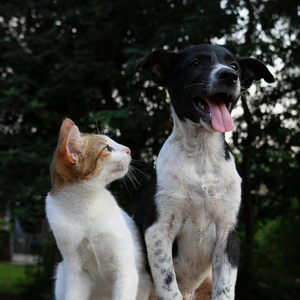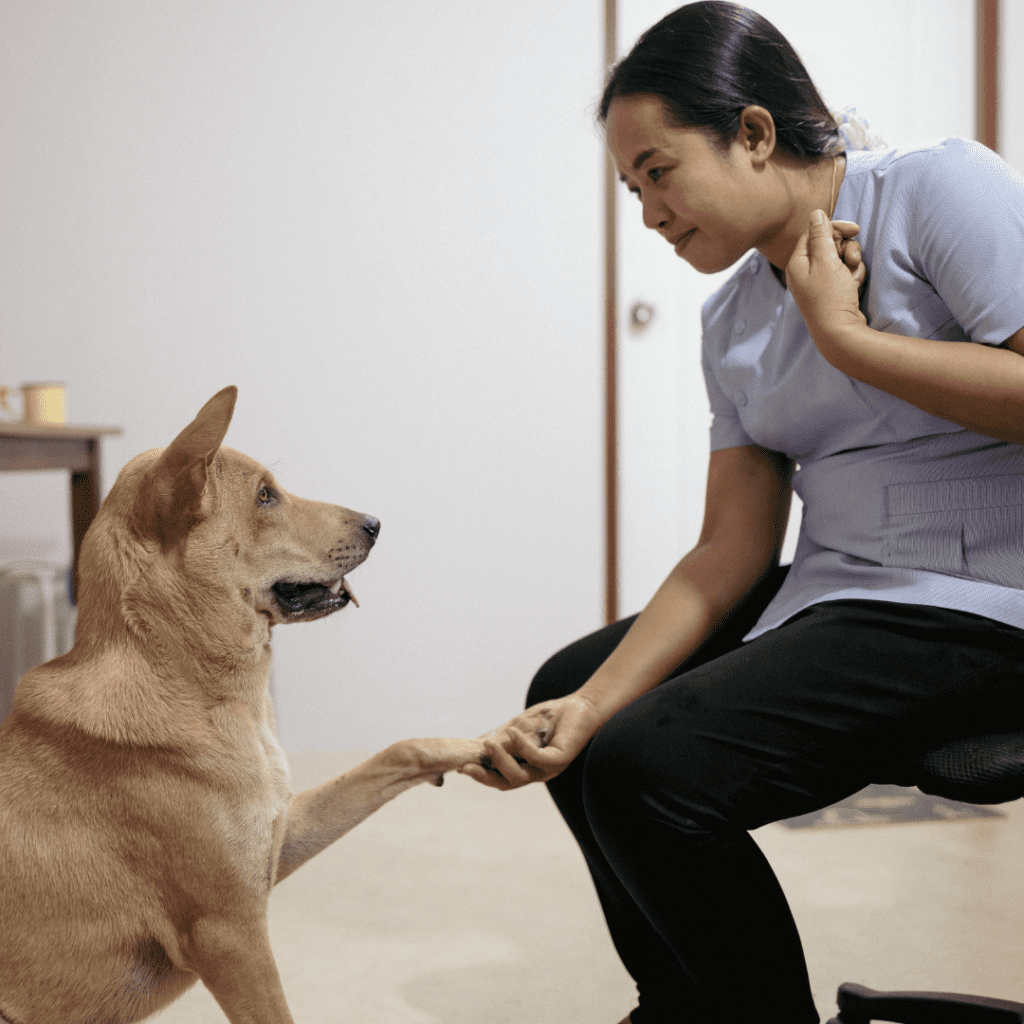I was recently reading an article from the Wall Street Journal, “She Charges $550 for 90 Minutes and Has a Wait List of 7,600 People”, and it stated that “pet psychics are making their way from the fringe to socially acceptable”. While I don’t consider myself a ‘pet psychic’, I agree that the landscape of animal communication is shifting into a more socially accepted realm. As an animal communicator, I’ve witnessed this transformation firsthand, and it’s heartening to observe the growing recognition of communication with animals as a legitimate and valuable practice.
Before I get into more about this transition, let me make a quick note about the term “pet psychic”. It can misconstrue the nuanced work of professionals in this field. Instead, the essence lies in understanding, empathy, and meaningful communication with animals—not fortune-telling. It’s about a deeper connection and dialogue.
The Animal Communication Perception Shift
The shift in perception about animal communication is evident for those in the animal field. Only a few years ago, most vets might have dismissed information from animal communicators or medical intuitives. Today, however, many vets are open to incorporating this input into their testing and diagnostics. Similar to how human doctors conduct interviews to collect symptom info, insights from animal communication can help guide vets in the right direction.
I remember just 10 years ago when people weren’t willing to share their experiences about who they use for their pet care if it was outside of the “norm”. While animal communication is becoming more well-known, people are still cautious. When someone is comfortable with sharing that they have used a “pet psychic” or animal communicator, people are intrigued. Even still, they rarely gather the information to convince themselves of the validity until they find themselves in a difficult situation with their pet and need a different perspective.
Other Recent Shifts In Perception
Just a few years ago, concepts now considered mainstream, such as acupuncture as a medical practice or animal-assisted therapy, were often viewed as fringe or paranormal. Acupuncture, once considered unconventional, has gained widespread acceptance as a complementary medical approach, integrated into many healthcare systems worldwide due to its proven efficacy. Similarly, animal-assisted therapy, initially met with skepticism, is now embraced as a beneficial intervention in various healthcare and therapeutic settings. These examples highlight how what was once perceived as outside the norm has gradually evolved into established and respected practices within society. It’s a testament to our growing understanding and openness to exploring alternative approaches that yield positive outcomes.
Why Animal Communication is Being Used More
The normalization of using communication practices is reflected in the experiences shared by those who have engaged with animal communicators. People seek sessions not just to resolve behavioral issues but also to understand their pets’ preferences for end-of-life care, unravel fear triggers, clarify training goals, introduce change in the family situation, and even ensure their pets are comfortable in the afterlife.
Relationship Building
This communication isn’t solely about resolving issues; it’s akin to relationship counseling. It’s about sharing perspectives, finding common ground, and creating understanding and connection. As understanding between humans and animals deepens, anxiety eases, and a stronger bond forms.
Life Changes
As society becomes more accepting of this communication practice, it’s becoming commonplace ahead of significant life changes. Animals, like us, benefit from understanding what comes next—be it a trip, a move, a new addition to the family, or even a change in routine. Clarity reduces stress and anxiety for our furry friends.
Decision Making
One remarkable aspect of this communication is its potential impact on decision-making. For instance, in one case I was assisting with, I helped a client choose the perfect retired military working dog by observing the reactions of their current pets to the 3 different profiles—a valuable insight often overlooked.
Physical Ailments
Moreover, the ability to sense and understand what animals feel isn’t just an abstract concept. It can manifest as physical sensations, as was the case with a pony experiencing breathing difficulty. The pony communicated, “It feels like a hotdog up my nose,” leading to the discovery and removal of a nasal growth by the vet.
Behavior Changes
Engaging an animal communicator to help understand behavior changes can be transformative, as animals thrive when they comprehend expectations. Often, humans struggle to clearly convey their desires, leading to mixed messages received by animals. However, through animal communication, a skilled communicator can bridge this gap, deciphering the subtle cues and unspoken needs of our furry companions. By facilitating a dialogue that transcends verbal language, these communicators enable a deeper understanding of an animal’s perspective. This mutual comprehension paves the way for clearer communication of expectations, reducing confusion and empowering animals to willingly comply with desired behaviors.
In a world where communication barriers between humans and animals often exist, animal communicators play a pivotal role. Sharing your experience after a pet communication session helps spread the word about this helpful resource. The work of communicators fosters understanding, eases anxiety, aids decision-making, and ultimately strengthens the bond between pets and their human companions. As these practices become more normalized, there’s less need to convince skeptics; instead, validation and confirmation of the value of insights from an animal’s perspective are increasingly prevalent.




